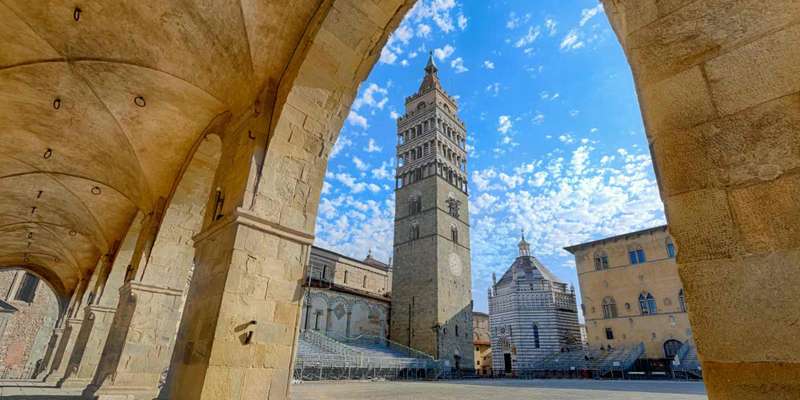- Home
- Useful Tips
- Accessible walking routes...
Exploring Pistoia's medieval old town presents unique challenges for travelers with mobility needs. Cobblestone streets and uneven surfaces transform what should be a delightful cultural experience into an exhausting obstacle course. Recent studies show 87% of wheelchair users abandon sightseeing plans due to inaccessible routes, missing out on UNESCO-recognized landmarks like the Cathedral of San Zeno. The frustration mounts when guidebooks mention 'walkable' attractions without specifying gradient changes or step-free alternatives. This gap leaves visitors anxious about encountering unexpected barriers, often forcing last-minute itinerary changes. Local insights become crucial in a town where 14th-century architecture meets modern accessibility needs, especially when searching for smooth pathways through the oval-shaped historic center.


Navigating Pistoia's cobblestones: Where smooth routes hide in plain sight
The key to comfortable exploration lies in understanding Pistoia's urban fabric. While main streets like Via Roma feature challenging uneven stones, parallel routes such as Via degli Orafi offer compact surfaces from medieval times when goldsmiths needed smooth paths for delicate transport. The 800-meter axis from Piazza del Duomo to Piazza della Sala proves surprisingly manageable, with subtle slope variations under 5%. Local shopkeepers maintain ramped entries that double as temporary rest points, a detail absent from official maps. Near the Baptistery, watch for tactile paving strips originally installed for visually impaired visitors – these often indicate the most level paths through secondary alleys. Evening strolls bring added advantages as lowered lighting helps mask minor surface imperfections while maintaining safe visibility.
Step-free marvels: Accessing Pistoia's top landmarks without elevation stress
Pistoia's cathedral complex demonstrates thoughtful adaptation where modern access meets medieval structures. The Piazza del Duomo's recent renovation created a seamless stone pathway from the square's edge directly to the cathedral's side entrance, bypassing the frontal steps completely. Few visitors notice the 1.2-meter-wide smooth stone channel running diagonally across the piazza – originally for rainwater drainage, it now serves as an ideal navigation line for wheeled mobility devices. Across town, the octagonal Battistero di San Giovanni maintains full accessibility through its northern portal, with docents trained to rearrange rope barriers instantly when needed. For Palazzo dei Vescovi's underground archaeological area, a discreet lift operates behind the ticket office – just ask staff to unlock the glass door marked 'Magazzino'.
Local secrets: Rest stops with accessible facilities you'd otherwise miss
Strategic break points transform Pistoia exploration from exhausting to enjoyable. The medieval Ospedale del Ceppo courtyard, often overlooked by guidebooks, features multiple stone benches with armrests perfectly positioned near a fully accessible restroom. Nearby, Antica Farmacia Lastrucci's 18th-century interior remains barrier-free, with staff happily allowing visitors to rest in the historic wooden consultation area while sampling their artisanal herbal teas. For longer respites, the Library San Giorgio offers not only step-free access but also charging ports for mobility scooters hidden beside their Renaissance manuscript displays. True locals know the best midday pause comes at Pasticceria Parenti, where the 90cm-wide alley entrance leads to an interior with removable seating and the town's smoothest chocolate cream-filled sfogliatine.
Timing your visit: When Pistoia's streets become most mobility-friendly
The difference between a stressful and serene experience often comes down to timing. Early mornings before 9:30am offer dual advantages – delivery trucks haven't yet parked across narrow lanes, and the low-angle sunlight reveals pavement variations most clearly. Tuesday market days (8am-1pm) might seem daunting, but vendors actually create temporary smooth aisles between stalls that aren't present on empty days. Rain transforms Pistoia's accessibility – light showers polish the stones to near-smoothness in central lanes where centuries of foot traffic have worn down edges. Summer evenings from 7pm bring cooler temperatures plus the bonus of locals rolling out temporary wooden walkways for their passeggiata, many happy to share these improvised paths with visitors needing steadier footing.
